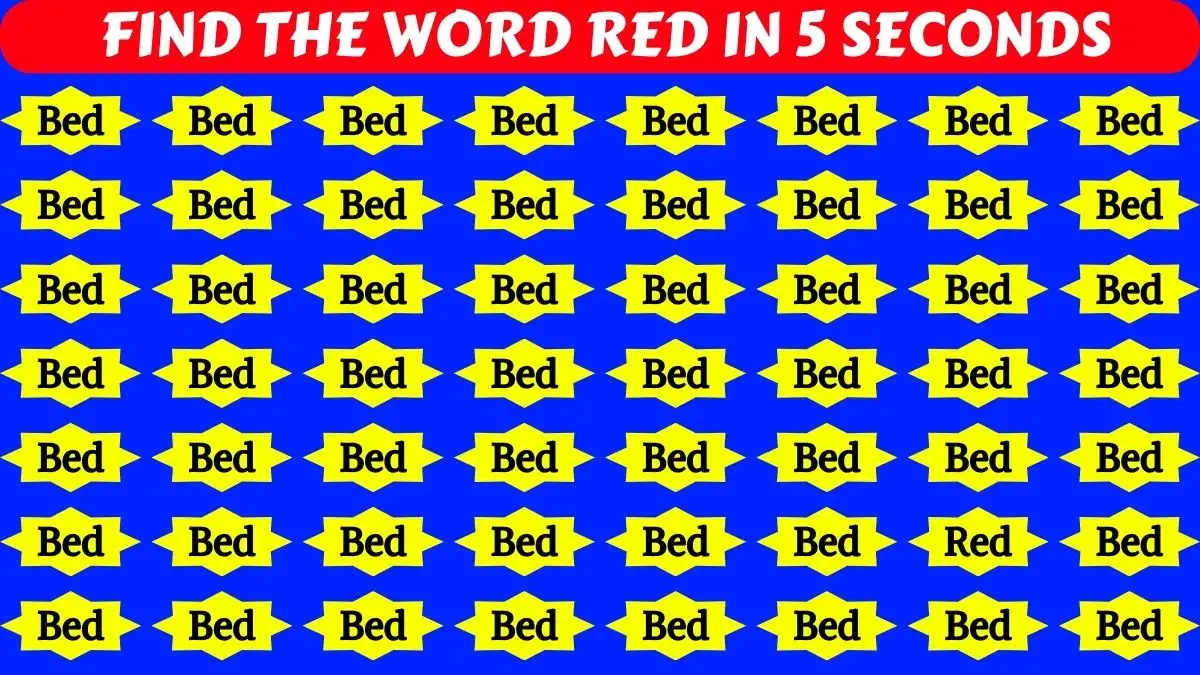Optical Illusion Brain Test: Only 1% Highly Observational People Can Spot The Word Red among Bed In 5 Seconds!
by Sangeetha
Updated Dec 22, 2023

Optical Illusion
Optical illusions are captivating visual phenomena that challenge our perception of reality. These intriguing images play tricks on our minds, often creating illusions that defy our usual expectations. One common type of optical illusion involves ambiguous figures, where an image can be interpreted in multiple ways, leading to a perceptual flip-flop. Another fascinating category is the "impossible object," where shapes are arranged in a way that seems plausible but defies the laws of geometry. Optical illusions exploit the complexities of human vision, showcasing how our brains interpret visual information and highlighting the gap between perception and reality. The allure of optical illusions lies in their ability to engage our cognitive processes, prompting us to question what we see and unravel the mysteries of visual perception.
Optical Illusion Brain Test: Only 1% of Highly Observational People Can Spot The Word Red among Bed In 5 Seconds!
In this optical illusion brain test, your observational skills will be put to the ultimate challenge. Among the letters forming the word 'Bed,' there is a hidden word waiting to be spotted by the most astute minds – 'Red.' This task is designed to assess your ability to quickly discern subtle details in a visually complex arrangement. The challenge lies in differentiating the letters that construct the word 'Bed' from the one strategically embedded within – 'Red.'
With only 5 seconds on the clock, you'll need to rely on your keen perception and quick thinking to identify the concealed word. This test is not just a visual puzzle; it's a fascinating exploration of how our brains process information and interpret patterns. Will you join the exclusive 1% of highly observational individuals who can conquer this optical illusion in record time? Take a moment to engage your mind, focus your attention, and see if you can rise to the challenge!

Optical Illusion Brain Test: Only 1% of Highly Observational People Can Spot The Word Red among Bed In 5 Seconds! - Solution
Unveiling the solution to this challenging optical illusion brain test requires a careful examination of the letters. Amidst the arrangement spelling out 'Bed,' the word 'Red' is subtly concealed. To successfully spot it within the 5-second timeframe, focus on distinguishing the letters that form 'Bed' from the one sneaking 'Red' into the mix. The 'R' and 'e' are camouflaged within the larger word, cleverly integrated to blend with the surrounding letters.
By training your eyes to discern these subtle details, you can successfully identify the hidden word 'Red' and join the esteemed 1% of highly observational individuals who excel at unraveling visual puzzles. Congratulations if you managed to crack the code – your keen perception and quick thinking have proven to be exceptional in navigating the intricate world of optical illusions!

Optical Illusion Brain Test: Only 1% Highly Observational People Can Spot The Word Red among Bed In 5 Seconds! - FAQs
Optical illusions can be classified into optical, auditory, and tactile illusions
It can be explained as the misrepresentation or the interpretation that contradicts the objective from the actual scenario.





